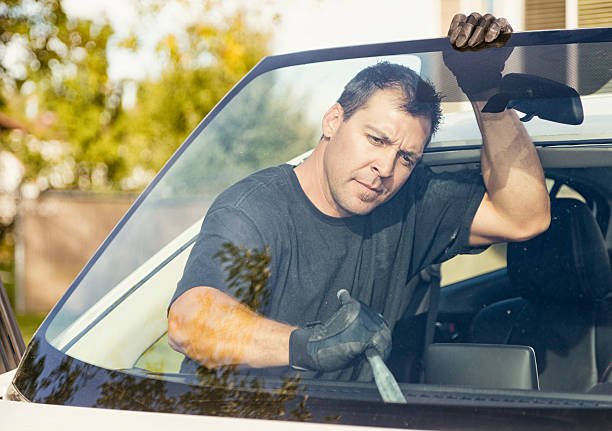
Newport Beach Express Auto Glass
Clear Views, Safe Journeys – Newport Beach's Premier Windshield Repair Experts!
The windshield is a crucial component of a vehicle, providing structural strength and contributing to safety. When it gets damaged, deciding whether to repair or replace it can be challenging. This comprehensive guide will walk you through the processes of both repairing and replacing a windshield, helping you make an informed decision.
Windshield damage can range from small chips and cracks to larger, more complex fractures. The type, size, and location of the damage are critical factors in deciding whether to repair or replace.
Repairable Damage: Generally, chips smaller than a quarter and cracks up to three inches long can be repaired.
Replacement Criteria: Cracks longer than three inches, deep damage penetrating both layers of glass, or damage in the driver's line of vision usually require replacement.
Windshield repair involves cleaning the damaged area and injecting a resin into the chip or crack. This resin is then cured and polished to restore the clarity and strength of the glass.
Inspection and Cleaning: The damaged area is thoroughly inspected and cleaned to remove debris.
Resin Application: A special resin is injected into the damaged area.
Curing: The resin is cured using a UV light, bonding the material to the glass.
Polishing: The area is polished to a clear finish, blending the repair with the surrounding glass.
Windshield repair is a quick process, often taking less than an hour. It's also more cost-effective than a full replacement.
Replacement is required when the windshield is extensively damaged or when the damage compromises the driver's visibility.
Removal of the Damaged Windshield: The damaged windshield is carefully removed to avoid damaging the vehicle’s frame.
Preparation for the New Windshield: The frame is cleaned and prepared for the new glass.
Installation: A new windshield is placed and bonded to the frame using a strong adhesive.
Curing: The adhesive must cure for a specific time, which can vary from one hour to several hours. This is crucial to determine if you can drive immediately after auto glass replacement.
Replacing a windshield is a more time-consuming and expensive process than repairing. The curing time of the adhesive also means the vehicle may not be drivable immediately after installation.
Damage in the driver's line of sight usually requires replacement due to the difficulty of making a repair that doesn't impair visibility.
Older or more extensive damage can be harder to repair effectively, often necessitating replacement.
The make and model of the vehicle can influence the cost and complexity of windshield replacement.
The windshield contributes significantly to the structural integrity of the vehicle. Compromised windshields can affect the vehicle's safety, particularly in rollovers or collisions.
The windshield plays a critical role in the proper deployment of airbags. A properly installed windshield ensures airbags deploy correctly in the event of an accident.
Many insurance policies cover windshield repair and replacement. However, coverage details and deductibles can vary.
Reputable auto glass services offer a warranty on their work. It's essential to understand the terms of the warranty for both repairs and replacements.
DIY kits are available for minor windshield repairs. However, they may not provide the same quality or durability as a professional repair.
Professional services ensure a high-quality auto glass repair or replacement, adhering to safety standards and using the correct materials and techniques.
Repairing a windshield, when possible, is more environmentally friendly as it reduces waste.
Windshield production and disposal consume energy and resources. Repairing helps conserve these resources.
Advancements in repair technology have made it possible to fix larger and more complex types of damage.
Modern windshields often come with technology like rain sensors, heads-up displays, and heating elements, which can complicate the repair or replacement process.

A qualified technician can accurately assess the damage and recommend the best course of action.
Professional installation ensures that the windshield is correctly fitted, bonded, and cured, providing peace of mind regarding safety.
Whether to repair or replace a windshield depends on several factors, including the type, size, and location of the damage, as well as safety considerations. Understanding the processes involved in both repairing and replacing a windshield can help vehicle owners make informed decisions. Ultimately, the safety and structural integrity of the vehicle should be the primary concern, guiding the choice between repair and replacement.
100 Vilaggio #235 Newport Beach, CA 92660, United States
Monday to Sunday 7 AM to 9 PM